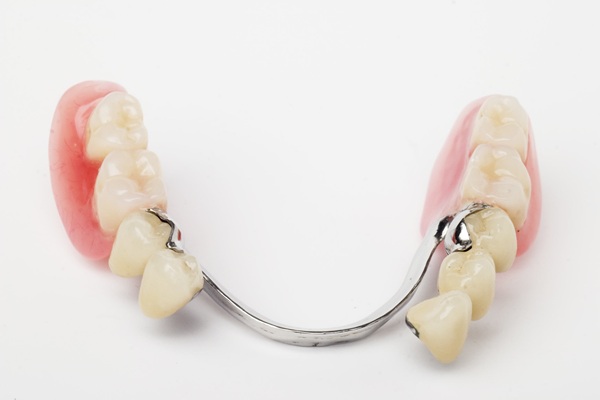You Can Expect During a Dental Veneers Procedure

You have decided to get dental veneers and made an appointment to finally improve your smile. There is just one problem — you feel a little nervous. After all, it is a big decision and you are not exactly sure what to expect. No problem! Let us fill you in on the process of getting dental veneers.
Preparation
The dental veneer procedure usually takes about three dentist visits, with a couple of exceptions. Composite bonding and instant veneers are often completed in a second visit because they require little to no natural tooth preparation before placement.
Creating a treatment plan
The initial visit will be a consultation. The dentist will talk about your goals for getting veneers. They will also perform a thorough oral examination to determine if you are a good candidate for dental veneers. The exam may include X-rays. After the exam, the dentist will determine the best treatment plan based on the exam findings and your reasons for choosing veneers. During this appointment, patients can also select color, shape and style preferences for composite or instant veneers.
Tooth preparation
Composite Bonding: If a patient chooses composite bonding, the dentist will clean the teeth. They will then apply the composite resin to each tooth and shape it according to the treatment plan. Once the dentist is satisfied with the shape and looks of the veneer, they will apply a high-intensity light to the tooth to set the resin. After a quick polish, the new veneers are ready to go.
Instant Veneers: After cleaning the teeth, the dentist will use a special type of cement to attach the selected veneers to the teeth. They will use ultraviolet light to activate the cement and speed up the bonding process. When this is finished, they may need to trim and shape the veneer so that it fits and looks more natural.
Porcelain Veneers: This type of veneer requires the most preparation. During the first appointment, the dentist will have decided whether or not to use a local anesthetic during this procedure. If so, the dentist will administer the anesthetic. Once the patient is comfortable, the dentist uses a small tool to remove 0.3 - 0.5mm from the surface of each tooth receiving a veneer. They will then take a mold of the teeth, which will be used to custom-make the veneers. Depending on how many teeth have been prepped and how much enamel was removed, the dentist may also place temporary veneers on the teeth. These will help protect them while awaiting the permanent porcelain veneers.
Placement
Porcelain veneers usually require a third visit. During this visit, the dentist will attach the custom-crafted veneers to the teeth. They will also discuss aftercare instructions and practices needed to maintain your dazzling new smile.
Bonding
The dentist will carefully check the veneers before applying them to make sure the color and shape match the treatment plan. They will use a special cement formulated specifically for porcelain veneers to attach each individual dental veneer. An ultraviolet light activates chemicals in the adhesive to shorten bonding time. As with instant veneer application, the dentist may need to make minor adjustments to ensure a perfect fit and look for your new smile.
Aftercare
Because dental veneer bonding does not require surgery or anesthesia, aftercare remains fairly simple. Post-placement pain can be managed with over-the-counter pain medications. Soft foods are suggested for a few days after the procedure. The dentist will also want to see you in a few weeks to evaluate how well the veneers are holding up and to make sure the gums are doing well. Regular dental hygiene — flossing and brushing — will keep your smile bright. There are also a few things that should be avoided with new dental veneers:
- Biting nails
- Chewing on pencils or ice
- Using teeth to open things
- Grinding or clenching teeth (a mouth guard may be necessary)
Conclusion
Congratulations on your big decision to improve your smile! Now you have an idea what you can expect during this process. If you have any other questions, contact your dentist. If you have not yet scheduled an appointment, contact us using the information below and we will set you on the road to a new and beautiful smile.
Request an appointment here: https://lincroftvillagedental.com or call Lincroft Village Dental Care at (732) 842-5005 for an appointment in our Lincroft office.
Check out what others are saying about our services on Yelp: Read our Yelp reviews.
Recent Posts
There are many benefits to removable partial dentures instead of alternative treatment solutions (i.e., implant-supported bridges). Understanding the advantages of partial dentures can help you make the most informed choice possible about the best way to replace your missing teeth.Removable partial dentures are a form of teeth replacement for a section of missing teeth. They…
Full mouth reconstruction involves replacing and repairing damaged or missing teeth. A treatment plan includes a variety of different treatments, and one common procedure is known as dental bridge treatment. This review takes a closer look at how general dentists use dental bridges to replace teeth during full mouth reconstruction. Most patients have several available treatment…
Experiencing a need for a denture repair? Unfortunately, dentures are extremely prone to accidents, which can result in damages such as cracks or chips. When this happens, a lot of wearers wonder what they should do next. The answer is simple, visit a dentist's office.Denture repair should always be done by a dentist, but why?…
Most adults experience some degree of gum disease during their lifetime, but it does not necessarily lead to tooth loss. Understanding how to identify and treat the stages of this common ailment can prevent it from spreading and reduce its impact.Gum disease is an infection of the gum tissue surrounding the teeth. It starts with…


